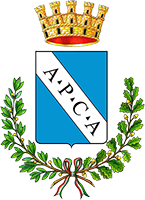
The small fraction of Montecampano lies at the top of a high hill, sits an ancient castle known from ancient times as the castle of “Mons Campanus”. Its remarkably strategic position, overlooking the valleys below of the rivers Nera and Tiber and close to the Via Amerina, interested the City-state of Amelia who acquired it in 1354. In 1399 Montecampano asked the Elders of Amelia to have some stretches of broken wall repaired and, in 1405, the walls and towers were reinforced. Montecampano was attacked for the first time by Braccio da Montone (Perugia 1368 – L’Aquila 1424), Captain of the Church Estate Army, who became Lord of Perugia a few years later. From then, the village suffered many attacks from the Vatican troops, such as the near castle of Fornole. In 1434, it was again ruined by the soldiers leaded by Nicolò Piccinino who ravaged all the surrounding countryside. During the 16th century, the castle was invaded by the Vitelli and the Orsini families and once more by the townspeople of Orte who never missed an opportunity of seizing land from Amelia.
At a later date, the castle was for a long time the residence in the estate of the noble family of Cansacchi Counts, owners of various estates and land properties including two buildings of great architectural value located in the center of Amelia (Palace Cansacchi of the Upper Valley situaded in the city district named “Platea” and Cansacchi Palace in the district called “Posterola”, built next to the Hospital of Santa Maria dei Laici). A few stretches of wall and some fine towers are all that remain of the original castle. Via Cansacchi runs within the walls, with fine buildings on both side and an ancient clock in a transit bridge leading form one building to another. The parish church of St. Peter in Chains bears no signs of its Medieval origins. All around the hill, the viewer can enjoy breathtaking sceneries of the valleys below, with woods, farmland, isolated old churches and ancient farmhouses, once belonging to aristocratic class of Amelia, in particular to prestigious families like the Venturelli, Racani, Boccarini, Catenacci and the Farrattini.
In this area, on the left bank of the river Tiber, confining with the neighbouring municipalities (Giove, Penna in Teverina, Lugnano in Teverina) had to be numerous country villas, as shown by the excavations at Poggio Gramignano (Lugnano), where, between 1988 and 1992, the remains of a 1st century B.C. villa of considerable extent came to light. The finding is even more remarkable if we consider that in the 5th century A.D., the villa was used as a burial ground to accommodate the graves of many children who died due to an epidemic, probably of malaria (this is why the villa is also known as “Children’s Necropolis of Lugnano”).


